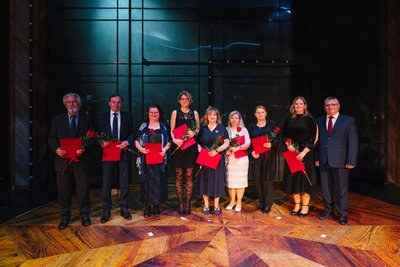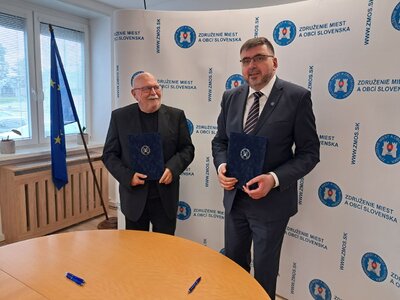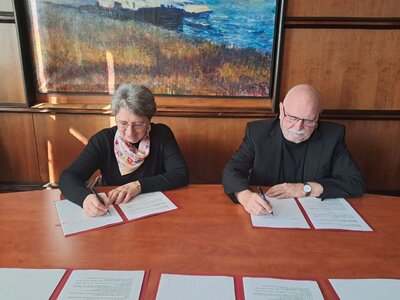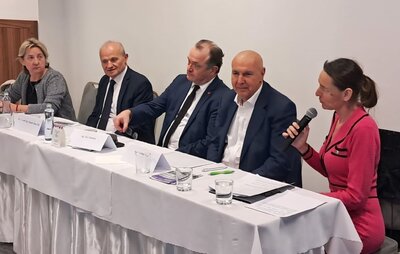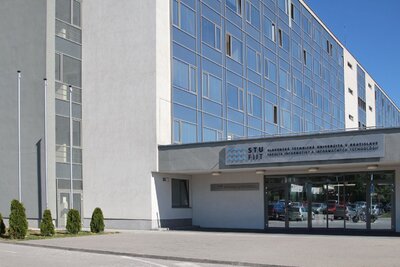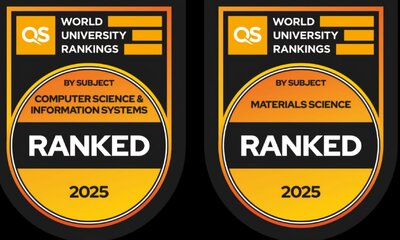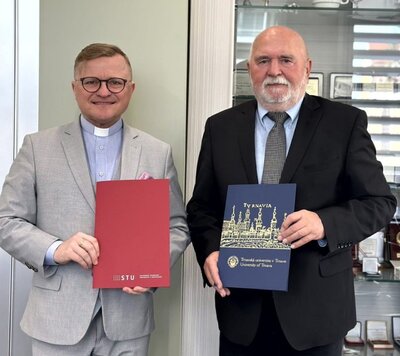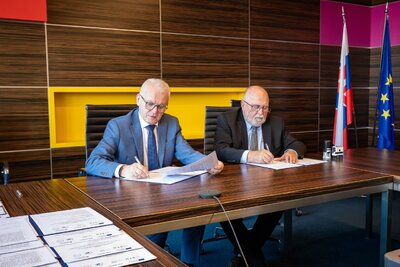English for Specific Purposes: Theoretical and Educational Perspectives in Higher Education.
Mgr. Martina Lipková, PhD.
martina.lipkova@stuba.sk
Slovenská technická univerzita v Bratislave
Strojnícka fakulta STU
Ústav jazykov, športu a spoločenských vied
Námestie slobody 17
812 31 Bratislava
Abstract:
Monograph English for Specific Purposes: Theoretical and Educational Perspectives in Higher Education deals with the theoretical approaches concerning specific needs of learners and improvement of the effectiveness of professional communication in a foreign language with regard to English for Specific Purposes (ESP). It analyzes the needs in ESP that is essential for strategic planning of ESP courses, the objective of which is to enhance professional lexical competence. The needs analysis in ESP helps meet the requirements for professional communication in specific disciplines, international research, education and the dissemination of research outcomes at international level. The second part of the monograph presents several practical and evidence-based research examples of academic skills development with emphasis on academic writing in synergy with effective reading methods. The monograph is also concerned with the use of modern computational technologies in the analysis of academic texts in terms of lexical density and lexical diversity and correlation between the variables. The analysis also presents the possibilities of using the tools of corpus linguistics to define strategies in the field of foreign language teaching and learning.
DOI: 10.61544/KVKO4533
Literatúra:
AGUSTIN-LLACH, M. P. (2016). Age and type of instruction (CLIC vs. traditional EFL) in lexical development. In: International Journal of English Studies, vol. 16, n.1, pp. 75-96. https://doi.org/10.6018/ijes/2016/1/220691
AMENGUA-PIZARRO, M. (2018). Foreign language classroom anxiety among English for Specific purposes (ESP) students. In: International Journal of English Studies, 18(2), pp. 145-159. https://doi.org/10.6018//ijes/2018/2/323311
Anderson, Wendy & John Corbett. 2017. Exploring Engish with Online Corpora. Second Edition. PALGRAVE. Macmillan Publishers Limited. ISBN 978-1-137-43809-6
ANDERSON, W. & CORBETTC, J. (2017). Exploring Engish with Online Corpora. Second Edition. PALGRAVE. Macmillan Publishers Limited.ISBN 978-1-137-43809-6
(7) (PDF) Role of Authentic Texts in Second Language Lexical Acquisition and Corpora-Based Approach to Language Teaching. Available from: https://www.researchgate.net/publication/370184039_Role_of_Authentic_Texts_in_Second_Language_Lexical_Acquisition_and_Corpora-Based_Approach_to_Language_Teaching [accessed Aug 13 2024].
APA STYLE. (2020). Publication Manual of the American Psychological Association, Seventh Edition. Retrieved [4 August 2024] from: https://apastyle.apa.org/products/publication-manual-7th-edition
ARMSTRONG, P. (2010). Bloom’s Taxonomy. Vanderbilt University Center for Teaching. Retrieved [11.08.2023] from: https://cft.vanderbilt.edu/guides-sub-pages/bloomstaxonomy/#2001
BAKER, M. (1988). Sub-technical vocabulary and the ESP teacher: An analysis of some rhetorical items in medical journal articles. Reading in a foreign language, 4 (2), pp. 91- 105
BALL, P. – KELLY, K. – CLEGG, J. (2015). Putting CLIL into Practice. Oxford University Press. 320ps. ISBN 978-0-19-442105-8.
BAUMANN, J. F., & Graves, M. F. (2010). What is academic vocabulary? Journal of Adolescent & Adult Literacy, 54(1), 4-12. doi:https://doi.org/10.1598/JAAL.54.1.1. Available from: https://www.proquest.com/docview/750429274?pqorigsite=gscholar&fromopenview=true
BECK, I. L., McKEOWN, M. G. and KUCAN, L. (2013). Bringing words to life: Robust vocabulary instruction. New York: Guilfor Press.
BENABDALLAH, A. (2021). English for Specific Purposses. Theoretical perspectives. Scholars’ Press, 2021. Pp. 51. ISBN 978-613-8-95778-2
BENAVENT, G., T., SÁNCHEZ-REYES, S. (2015). Target Situation as a Key Element for ESP (Law Enforcement) Syllabus Design, Journal: Procedia - Social and Behavioral Sciences, : 2015, ISSN: 1877-0428. Retrieved [02/07/2024] from: https://core.ac.uk/outputs/82711542/?utm_source=pdf&utm_medium=banner&utm_campaign=pdf-decoration-v1
BIBER, D., CONNOR, U., UPTON, A. T. (2007). Discourse on the Move: Using Analysis to Describe Discourse Structure. Library of Congress Cataloging-in-Publication Data. John Benjamins B.V. 2007. (pp. 290). ISBN 978 90 272 2302 9
BIBER, D., CONRAD, S., & REPPEN, R. (1998). Corpus Linguistics. CUP. Online ISBN 9780511804489
BOJO, P. (2022). A brief guide to thesis writing. Z-F LINGUA, 2022. ISBN 978-80-8177-098-2; EAN 9788081770982
BONNET, A. (2012). In Depth: Towards an Evidence Base for CLIL. How to Integrate Qualitative and Quantitative as well as Process, Product and Participant Perspectives in CLIL Research. In: International CLIL Research Journal. University of Jyväskylä. vol. 1, n.4. ISSN 1707-948X
BOULTON, A. (2016). Integrating corpus tools and techniques in ESP courses. Groupe d'étude et de recherche en anglais de spécialité, 2016. Concepts and Framworks in ESP courses. Pp. 113-137. ISSN 1246-8185. Retrieved [02/07/2024] from: file:///C:/Users/acer2/Downloads/asp-4826.pdf
BURAN, A. (2015). Mind Mapping technique in Language Learning. Elsevier. Procedia Social and Behavioral Sciences 206 (215 – 218). Available online: http://www.sciencedirect.com/science/article/pii/S1877042815051435)
BUZAN, T. (1996). The Mind Map Book. How to use radiant thinking to maximize your brain’s untapped potential. New York: Plume. ISBN 9780452273221
CAMBRIDGE ONLINE DICTIONARY. Retrieved [4 August 2024] from: https://dictionary.cambridge.org/
CAMITTIOLI, CRAWFORD, B. (2007). The Language of Business Studies Lectures: A corpusassisted analysis (Pragmatics and Beyond New Series). John Benjamins Publishing Company. 236 pp. ISBN-10: 9027254001. ISBN-13: 978-9027254009
CAPPUZZO, B. (2020). Using Parallel Corpora for Translation Activities in L2 Medical English Undergraduate Teaching, with Specific Reference to Italian Sports Sciences Courses. In: ESC 2020 Proceedings. ISBN: 978-608-4642-74-9 file:///C:/Users/acer2/Downloads/14091-Article%20Text-41172-1-10-20210322.pdf
CENOZ, J. – GENESEE, F. – GORTER, D. (2014). Critical Analysis of CLIL: Taking Stock and Looking Forward. In: Applied Linguistics, vol. 35, n. 3, pp. 243– 262, https://doi.org/10.1093/applin/amt011
CLEGG, J. (2002). The language of thinking. In: Ethical English: Teaching language through content and content through language, pp. 97-99. Sofia, Bulgaria: Science Across the World and The British Council.
COFFIN, C., CURRY, M. J., GOODMAN, S., HEWINGS, A., LILLIS, T. M. L., SWANN, J. (2003). Teaching Academic Writing. A Toolkit for Higher Education. Routledge, Taylor & Francis Group, London and New York, 2003. Pp. 175. ISBN 0-415-26135-X (hbk). ISBN 0-415-26136 (pbk)
CORPUS LINGUISTICS. (1998). W3-Corpora Project at the University of Essex. 1998. [online]. Accessed on: 19 July 2021. Retrieved from https://www1.essex.ac.uk/linguistics/external/clmt/w3c/
COYLE, D., HOOD, P., MARSH, D. (2010). CLIL: Content and Language Integrated Learning. Cambridge University Press. ISBN 3125338875, 9783125338876.
COYLE, D. (2015). A pluriliteracies approach to teaching for learning. Graz: European Centre for Modern Languages (ECML). Available online: https://pluriliteracies.ecml.at/Portals/54/publications/pluriliteracies-Putting-apluriliteracies-approach-into-practice.pdf
COYLE, D. (2018). The Place of CLIL in (Bilingual) Education, Theory Into Practice. 57:3, 166-176, DOI: 10.1080/00405841.2018.1459096
DALTON-PUFFER, C. (2011). Content-and-Language Integrated Learning: From Practice to Principles? Annual review of Applied Linguistics. CambridgeUniversity Press, pp. 182-204.
DANEK, J. (2019). Pedagogical practice – position, contribution and importance in the process of preparing of future teachers. In: Slavonic Pedagogical Studies Journal, vol. 8. n.1, pp. 31-41. ISSN 1339-8660
DE GRAAFF, R. T. – KOOPMAN, G. J. – ANIKINA, Y. – WESTHOFF, G. (2007). An Observation Tool for Effective L2 Pedagogy in Content and Language Integrated Learning (CLIL), International Journal of Bilingual Education and Bilingualism, 10:5, pp. 603-624, DOI: 10.2167/beb462.0
DEREWIANKA, B. & JONES, P. (2016). Teaching Language in Context. Oxford University Press, 2nd edition, 2016. Pp. 368. ISBN-10: 0190303686. ISBN-13: 978-0190303686
DUCHOVICOVA, J. (2016). Personal competences of absolvents as prerequisite of social inclusion. In: Slavonic Pedagogical Studies Journal, vol. 5, n. 1, pp. 184-200. ISSN 1339-8660. doi: 10.18355/PG.2016.5.1.184-200
DUDLEY-EVANS, T. (1997). Developments in English for Specific Purposes: A multi-disciplinary approach. Cambridge University Press. In: LAURENCE, A. (1998). Defining English for Specific Purposes and the Role of the ESP Practitioner. Retrieved [1 August 2024] from: file:///C:/Users/acer2/Downloads/Defining_English_for_Specific_Purposes_and_the_Rol.pdf
ETIC. (1975). English for Academic Study: problems and perspectives. ETIC Occasional Paper. London: The British Council.
EURYDICE. (2019). National Qualification Framework. National Systems of Qualifications. The National System of Occupations. Legislative References. 20 November, 2019. Available online: https://eacea.ec.europa.eu/nationalpolicies/eurydice/content/national-qualifications-framework-72_en
FISHER, D., & FREY, N. (2008). Word wise and content rich: Five essential steps to teaching academic vocabulary. Portsmouth, Heinemann. NH 03801 – 3912. ISBN – 13: 978-0325-01382-4.
FORTUNE, L. & LINDEN, K. V. (2014). Types of Academic Papers. [Accessed on: 16 July, 2024]. Retrieved from: https://community.saybrook.edu/writingcenter/PublishingImages/Pages/academic-writing-genres/Types%20of%20Academic%20Papers%20(Fortune%20&%20Linden,%202014).pdf
GALLOWAY, V. (1992). Toward a cultural reading of authentic texts. Languages for a multicultural world in transition, pp. 87-121. Lincolnwood. National Textbook Co.
GILMORE, A. (2007). Authenic materials and authenticity in foreign language learning. Language Teaching. Volume 40. Issue 2. April 2007. pp 97-118. Cambridge University Press. doi:10.1017/S0261444807004144. https://www.researchgate.net/publication/231910134_Authentic_materials_and_authenticity_in_foreign_language_learning
HALLIDAY, M. A. K. (1985). Spoken and Written Language. Deakin University. Oxford University Press. ISBN 019 437153 0
HALLIDAY, M. A. K. (1985). In: Derewianka, Bewerly & Jones, Pauline (2016). , Oxford University Press, 2nd edition, 2016. Pp. 368. ISBN-10: 0190303686. ISBN-13: 978-0190303686
HENRY, A. – CLIFFORDSON, C. (2017). The Impact of Out-of-School Factors on Motivation to Learn English: Self-discrepancies, Beliefs, and Experiences of Selfauthenticity. In: Applied Linguistics, vol. 38, n. 5, pp. 713– 736, https://doi.org/10.1093/applin/amv060
HOUWER, A. D. (2011). Language input environments and language development in bilingual acquisition. In: Applied Linguistic Review, pp. 221-240. Online ISBN: 9783110239331
HUDECOVÁ, E. et al. (2021). Comparison of Machine Translation, Post-Editing and Human Translation of Technical Documentation from Slovak to German. Slovak Language, 2021, Vol. 86, No 2, pp. 192 – 207. Ludovit Stur Institute of Linguistics, Slovak Academy of Sciences. ISSN 0037-6981 https://www.sav.sk/journals/uploads/12101122porovnanie-strojovehoposteditovaneho-a-ludskeho-prekladu-technickej-dokumentacie-zo-slovenciny-donemciny.pdf
HUTCHINSON, T., WATERS, A. (1987). English for Specific Purposes. A learning-centred approach. Cambridge University Press, First published 1987. Pp. 183. ISBN 978-0-521-31837-2
JAHANGARD,A., HOLDERREAD, S. (2017). Translation from L1 to L2 vs. direct writing: A new assessment model. In: Translation and Translanguaging in Multilingual Contexts. Published by John Benjamins Publishing Company. Online ISSN: 2352-1813. Print ISSN: 2352-1805. Volume 3, Issue 2, January 2017, p. 210 – 228. DOI:
https://doi.org/10.1075/ttmc.3.2.04jah
JIMENEZ, P.O. (2017). L 1- based Communication Strategies in CLIL and NON-CLIL Learners of L 3 English. Available online: https://pdfs.semanticscholar.org/f00a/29d30f60587472054705186319b8f99db0c4.pdf ?_ga=2.142553077.672239358.1577561127-84690769.1577561127
JOHNSON, K. & JOHNSON, H. (1998). Encyclopedia Dictionary of Applied Lingusistics. Oxford: Blackwell. Print ISBN: 9780631214823. Ebook ISBN: 9780631227670.
JORDAN, R. R. (1997). English for Academic Purposes. A guide and resource book for teachers. Cambridge University Press, 1997. ISBN 0 521 5542 3 hardback. ISBN 0 521 55618 X paperback.
KILGARRIFF, A. and VÍT, B., BUŠTA, J., JAKUBÍČEK, M., KOVÁŘ, V., MICHELFEIT, J., RYCHLÝ, P., SUCHOMEL, V. (2014). The Sketch Engine: ten years on. Lexicography, 1: 7-36, 2014. Retrieved from: https://www.sketchengine.eu/wpcontent/uploads/The_Sketch_Engine_2004.pdf
KING, F. J. (1997). State wide assessment of listening and verbal communication skills, information literacy skills, and problem-solving skills. Tallahassee: Florida State University.
KING, F. J., GOODSON, L. & ROHANI, F. (2018). Higher Order Thinking Skills: Definition, Teaching Strategies, & Assessment. Florida: A Publication of the Educational Services Program, Now Known as the Center for Advancement of Learning and Assessment, Florida.
KLIMOVA, F. B. (2013). Developing Thinking Skills in the Course of Academic Writing. Procedia - Social and Behavioral Sciences, Volume 93, 2013, Pages 508-511, ISSN 1877-0428, https://doi.org/10.1016/j.sbspro.2013.09.229. (https://www.sciencedirect.com/science/article/pii/S1877042813033326)
KOVÁČ, S. (2018). Reading fluency vs. Reading accuracy – How does reading rate influence reading comprehension? In: Filologické štúdie 4. Nümbrecht, KIRSCH-Verlag, 2018. ISBN 978-3-943906-47-9.
KUCHARIKOVA, A. – LIPKOVA, M. – LOKAJOVA, J. (2019). Mind-Mapping as a Tool for Teaching ESP/CLIL Presentations. In: Conference Proceedings of the 12th International Conference “Innovation in Language Learning”. Milano: Filodiritto Publisher, pp. 1-6. ISBN 978-88-85813-80-9.
KUIKEN, F., VEDDER, I. (2019). Syntactic complexity across proficiency and language: L2 and L1 writing in Dutch, Italian and Spanish. In: Special Issue: Special Issue on Syntactic Complexity. International Journal of Applied Linguistics. Volume 29, Issue 2: July 2019. Pages 173 – 191, ISSN 1473-6106, https://doi.org/10.1111/ijal.12256
LAHMANN, C., STEINKRAUSS, R., Schmid, M. S. (2019). Measuring linguistic complexity in long-term L2 speakers of English and L1 attriters of German. In: Special Issue: Special Issue on Syntactic Complexity. International Journal of Applied Linguistics. Volume 29, Issue 2: July 2019. Pages 173 – 191, ISSN 1473-6106, https://doi.org/10.1111/ijal.12259
LARSSON, T., KAATARI, H. (2020). Syntactic complexity across registers: Investigating (in)formality in second-language writing, Journal of English for Academic Purposes, Volume 45, 2020, 100850, ISSN 1475-1585, https://doi.org/10.1016/j.jeap.2020.100850. (https://www.sciencedirect.com/science/article/pii/S1475158519304680)
LIPKOVA, M. (2019). CLIL Principles in Vocational Technical Education. In: Proceedings of the International Conference on Research in Humanities, pp 29-44. London: ICRHCONF. ISBN 978-609-8239-16-4.
LIPKOVÁ, M. (2020). Mechanical Engineering Lexis and CLIL Principles in Acquisition of Content-Based Lexical Competence in English. DOI: 10.18355/XL.2020.13.02.15 in XLinguae. European Scientific Language Journal. Volume 13. Issue 2. Pp. 176-188. ISSN 1337-8384. eISSN 2453-711x. In SCOPUS: 2-S2.0-85084454440 (2019: 0.318 - SJR, Q1 - SJR Best Q). Retrieved from: file:///C:/Users/CJ2/Documents/%C4%8Cl%C3%A1nky/XLinguae2_2020_15.pdf
LIPKOVÁ, M. (2021). Role of Authentic Texts in Second Language Lexical Acquisition and Corpora-Based Approach to Language Teaching. In: The Conference proceedings of IAC in Budapest, 2021: Global Education, Teaching and Learning (IAC-GETL). Pp. 8 – 19. Czech Technical University in Prague (CTU). Czech Institute of Academic Education z.s. ISBN 978-80-88203-24-7
LIPKOVÁ, M. (2024). Lexical Density in Academic Writing: Lexical Features and Learner Corpora Analysis in L2 Tertiary Students’ Essays and Didactic Implications. ISSN: 2186-5892 The Asian Conference on Education 2023: Official Conference Proceedings https://doi.org/10.22492/issn.2186-5892.2024.98
LOJOVÁ, G. (2005). Individuálne osobitosti pri učení sa cudzích jazykov. Bratislava. ISBN 978-80-223-2983-5.
MACKEY, W. (1962). The description of bilingualism. In: Canadian Journal of Linguistics/Revue Canadienne De Linguistique, 7(2), pp. 51-85. doi: 10.1017/S0008413100019393
MALA, E. – MUGLOVA, D. – STRANOVSKA, E. (2019). Stimulation of creativity potential and ambiguity tolerance as effective foreign language teaching predictors. In: Slavonic Pedagogical Studies Journal, vol. 8. n. 1, pp. 164-175. ISSN 1339-8660 MEHISTO, P. – MARSH, D. – JESUS, M. 2008. Uncovering CLIL: Content and Language Integrated Learning in Bilingual and Multilingual Education. Macmillan ELT. ISBN 978-0230027190.
MCCARTHY, Michael. (2004). Touchstone. From Corpus to Coursebook. Cambridge. Cambridge University Press, 2004. Pp. 20. ISBN 0 521 93481 8
McCARTHY, M., O’Dell, F. (2016). Academic Vocabulary in Use. Vocabulary reference and practice. Second Edition. Cambridge University Press. ISBN 978-1-107-59166-0
MENESES, A., UCCELLI, P., SANTELICES, M. V., RUIZ, M., ACEVEDO, D., & FIGUEROA, J. (2018). Academic language as a predictor of reading comprehension in monolingual Spanishspeaking readers: Evidence from Chilean early adolescents. Reading Research Quarterly, 53, 223–247 (PDF) Domain-Specific Academic Vocabulary Network Development in Elementary Grades Core Disciplinary Textbooks. Available from: https://www.researchgate.net/publication/333930635_Domain-Specific_Academic_Vocabulary_Network_Development_in_Elementary_Grades_Co re_Disciplinary_Textbooks [accessed Aug 14, 2023].
MORROW, K. (1977). Authentic texs and ESP. In S. Holden (ed.). English for Specific Purposes. London. Modern English Publications. pp. 13-17.
NATION, I. S. P. (1990). Teaching and Learning Vocabulary. New York: Newbury House/Harper-Collins.
NORDQUIST, Richard. (2020). Definition and Examples of Corpora in Linguistics. Accessed on 19 July 2021. Retrieved from https://www.thoughtco.com/what-is-corpus-language-1689806
NUAN, David. (1998). Second language teaching and learning. Boston: Heinle and Heinle Publishers. ISBN-13: 978-0838408384
NURKAMTO, J. et al. (2024). Academic writing apprehension in higher education: A systematic review. Studies in English Language and Education. Vol 11, No 1: 247-266. DOI: 10.24815/siele.v11i1.28928
O’KEEFFE, A. and McCARTHY, M. (2012). Routledge handbook of corpus linguistics. London: Routledge, 2012. Pp. 682. ISBN 978-0415622639
PALTRIDGE, B. & STARFIELD, S. (2013). The Handbook of English for Specific Purposes. Boston, Wiley-Blackwell. Print ISBN:9780470655320. Online ISBN:9781118339855
POKRIVCAKOVA, S. et al. (2009). Cudzie jazyky a kultúry v škole. Brno: Masarykova univerzita, pp. 161-182. ISBN 978-80-210-4974-1.
PORTER, D. & ROBERTS, J. (1981). Authentic listening activities. ELT Journals. 36/1. Pp. 139-141.
RHASHVINDER, K. A. S., CHARANJIT K. S. S., TUNKU, M. T. M. , NOR, A. MOSTAFA l & TARSEM S. M. S. (2017). A Review of Research on the Use of Higher Order Thinking Skills to Teach Writing. International Journal of English Linguistics; Vol. 8, No. 1; 2018 ISSN 1923-869X E-ISSN 1923-8703 Published by Canadian Center of Science and Education. Available from: https://pdfs.semanticscholar.org/cec0/e5a6ffefeaba30413b7fccc14ae1d5f0bf13.pdf
RICHARDS, J. C., Platt, J. And Platt, H. (1992). Longman Dictionary of Language Teaching and Applied Linguistics. 2nd ed. London: Longman. ISBN 9780582072442, 0582072441.
RICHARDS, J. C. (2001). Curriculum Development in Language Teaching. Cambridge University Press. Online ISBN 9780511667220
RUISZ, Y. – CATALAN, R. M. J. (2009). Content and Language Integrated Learning: Evidence from Research in Europe (Second Language Acquision). ISBN-13: 978- 1847691651.
SALAZAR, E. U. (2017). Designing and Implemeting and ESP Course: Revisiting an Experience. Universidad de Costa Rica. Revista Pensamiento Actual, Vol. 17, No. 28, 2017. ISSN Impreso 1409-0112. ISSN Electrónico 2215-3586.
SIANTURI, L. P. D. , SILALAHI, D. E. , PURBA, C. N. (2020). Improving Students’ Writing Ability based on Higher Order Thinking Skills (HOTS) Questions at 8th Grade in SMP Swasta Kartika 1-4 Pematangsiantar. JETAFL (Journal of English Teaching as a Foreign Language) Publishing, Volume 6, Issue 2: June 2020 ISSN: 2459-9506
(https://uhn.ac.id/files/akademik_files/2006231133_2020_Journal%20of%20English%20Teaching%20as%20a%20Foreign%20Language%20Vol%206%20Issue%202%2 0June%202020_01.%20Lasta%20Sianturi,%20Dumaris%20E.%20Silalahi,%20Christ ian%20Neni%20Purba%20-%20Improving%20Students%E2%80%99%20Writing%20Ability%20based%20on%20Higher%20Order%20Thinking%20Skills%20(HOTS).PDF)
SIFAKIS, N. C. (2019). ELF Awareness in English Language Teaching: Principles and Processes. In: Applied Linguistics, vol. 40, n. 2, pp. 288– 306, https://doi.org/10.1093/applin/amx034
STAROŇOVÁ, K. (2011). Vedecké písanie. Ako písať akademické a vedecké texty. Vydavateľstvo Osveta, spol. s r. o., Martin, 2011. Počet strán: 248. ISBN 978-80-8063-359-2
SUNGGINGWATI, D. (2017). Reading and Writing Skills of Scientific Articles for Undergraduate Students: Benefits and Challenges. International Conference on Learning Innovation (ICLI 2017): Advances in Social Science, Education and Humanities Research, volume 164. Available from: file:///C:/Users/acer2/Downloads/25891051.pdf
TIMAR, E. Writing a compelling research proposal. Central European University. Hungary. Online video presentation. [Accessed on 17 July 2024]. Retrieved from: https://www.youtube.com/watch?v=vAFHfGJGxu8
UNIVERSITY OF TORONTO LIBRARIES. (2024), Getting Started with Research & Writing on Art. Is your Source Credible? In: Research Guides. University of Toronto Libraries, Updated Jan 9, 2024. [Accessed on: 16 July, 2024]. Retrieved from: https://guides.library.utoronto.ca/FAH198/CRAAP
URE, J. (1971). Lexical Density and Register Differentiation. In: Camittioli, Crawford B. (2007). The Language of Business Studies Lectures: A corpus-assisted analysis (Pragmatics and Beyond New Series). pp. 73-76 John Benjamins Publishing Company. 236 pp. ISBN-10: 9027254001. ISBN-13: 978-9027254009
VAN KAMPEN, E. – MEIRINK, J. – ADMIRAAL, W. – BERRY, A. (2017). Do we all share the same goals for content and language integrated learning (CLIL)? Specialist and practitioner perceptions of ‘ideal’ CLIL pedagogies in the Netherlands. International Journal of Bilingual Education and Bilingualism, DOI: 10.1080/13670050.2017.1411332
VAN KAMPE, E. – ADMIRAAL, W. – BERRY, A. (2018). Content and language integrated learning in the Netherlands: teachers’ self-reported pedagogical practices. International Journal of Bilingual Education and Bilingualism, 21:2, pp. 222-236, DOI: 10.1080/13670050.2016.1154004
VANMASSENHOVE, E., SHTERIONOV, D. and Andy Way. (2019). Lost in Translation: Loss and Decay of Linguistic Richness in Machine Translation. In Proceedings of Machine Translation Summit XVII: Research Track, pages 222–232, Dublin, Ireland. European Association for Machine Translation. Available from: https://aclanthology.org/W196622.pdf
VAZQUEZ, M. B. (2014). Lexical Transfer in the Written Production of a CLIL Group and a Non-CLIL Group. In: International Journal of English Studies, 14(2), pp. 57-76. https://doi.org/10.6018/j.166251
VYDRA, A. (2010). Akademické písanie. Ako vzniká filozofický text. Filozofická fakulta Trnavskej univerzity v Trnave, 2010. Počet strán: 192. ISBN 978-80-8082-380-1
VYGOTSKY, L. S. (1980). Mind in society: The development of higher psychological processes. Cambridge. MA: Harvard University Press. ISBN 0674076680, 9780674076686.
WANG, Q. – LI, S. (2019). Chapter 4. The relationship between task motivation and L2 motivation. Chapter published in: Researching L2 Task Peformance and Pedagogy: In honour of Peter Skehan. Task-Based Language Teaching 13. pp. 67-92. e-Book ISBN: 9789027262387
WHITTINGTON, M. S. (1998). Higher Order Thinking Opportunities Provided by Professors in College of Agriculture Classrooms. Journal of Agricultural Education. Volume 36. Number 4. Pp. 32-38. DOI: 10.5032/jae. 1995.04032 (https://web.archive.org/web/20170812055210id_/http://www.jaeonline.org/attachments/article/588/36-04-32.pdf)
WIDDOWSON, H. G. (1983). Learning purpose and language use. Oxford: Oxford University.
WINCH, J. (2016). Language learning and enjoyment of stem students studying Japanese. In: Slavonic Pedagogical Studies Journal, vol. 5, n. 2, pp. 246-270. ISSN 1339-8660
ZAMFIR, T. (2022). On Vocabulary Learning Strategies in ESP: A Students’ Perspective. Bulletin of the Transilvania University of Braşov Series V: Economic Sciences. Vol. 15(64) No. 1 - 2022 https://doi.org/10.31926/but.es.2022.15.64.1.10

